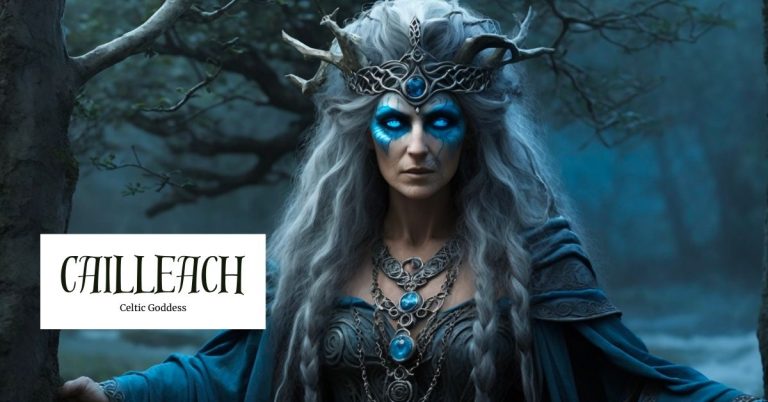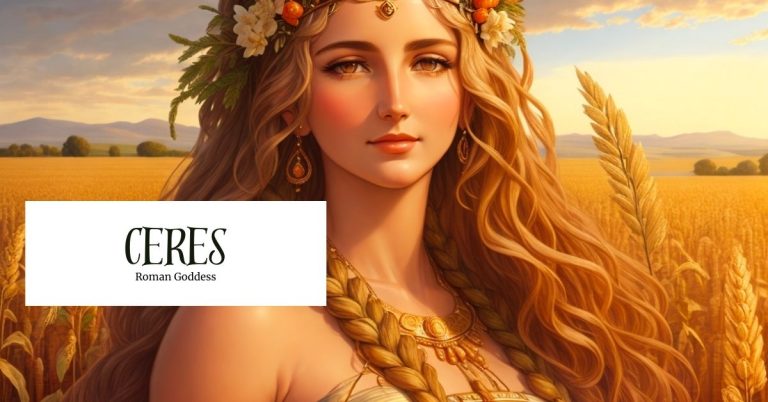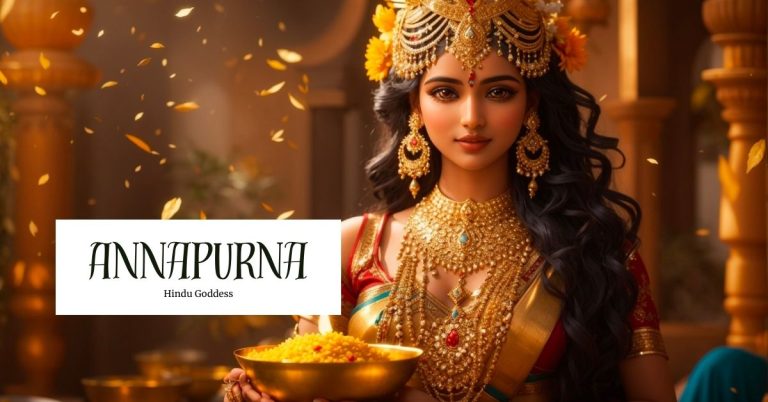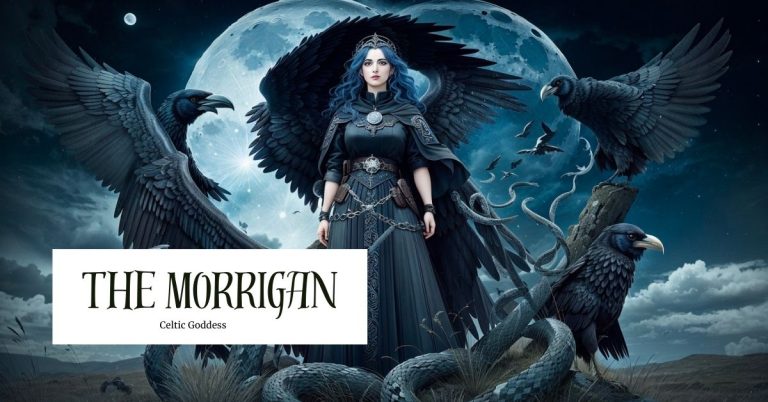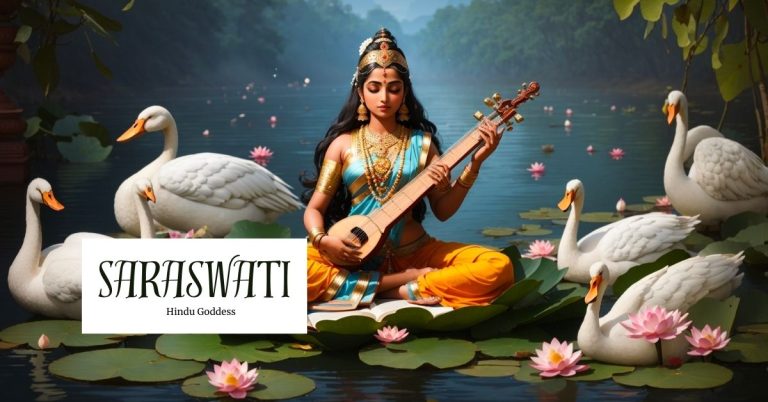Parvati: The Goddess of Love and Beauty
Parvati is an esteemed figure in Hindu mythology, known for embodying the essence of eternal energy and creative force that permeates the universe. Her compassionate and nurturing character has earned her reverence as a goddess of love and devotion, particularly towards Lord Shiva. Parvati holds a sacred place in Hindu belief as the mother of the universe and the source of all life. She is believed to have taken on various forms and incarnations, each representing a unique aspect of her divine power. Her multifaceted nature is celebrated and revered by devotees who seek her blessings.
Overview of Parvati
Parvati has many names, including Shakti and Devi. The term “Parvati” is derived from the Sanskrit word “Parvati,” which means mountain. According to Hindu mythology, Parvati is the reincarnation of Sati, the first wife of Lord Shiva. She is revered as the embodiment of feminine energy and is an essential symbol of the divine feminine in Indian culture.
Parvati’s significance in Hindu mythology reflects the importance of motherhood, femininity, and the divine feminine in Indian culture. She is a vital figure in Hinduism and continues to be a source of inspiration and hope for millions of people around the world.
Source: Artstation
Titles
- Great Goddess
- Divine Energy
- Mother of the World
- Light
Abilities
Parvati is widely celebrated for her extraordinary talents and divine abilities, contributing to her sacred position. Her embodiment of immense strength, wisdom, and resilience distinguishes her as a genuinely remarkable deity. As the goddess of fertility, Parvati is believed to be capable of bestowing blessings that promote the flourishing and abundance of life, bringing joy and prosperity to families (Wikipedia Contributors).
Moreover, Parvati holds immense significance in marital happiness, believed to be a source of harmony and companionship for couples who seek her blessings. Her divine influence fosters love, devotion, and understanding between partners, promoting strong and harmonious relationships. One of Parvati’s most remarkable attributes is her ability to manifest her divine energy and take on various forms to accomplish specific objectives (“Parvati – New World Encyclopedia”). Parvati’s transformations highlight her versatility and her capacity to address the unique needs and aspirations of her devotees, whether as the fierce and protective Durga, the compassionate and nurturing Uma, or the radiant and graceful Gauri. Such is the power and beauty of this revered goddess who continues to inspire and uplift countless souls.
Characteristics
Parvati’s stunning physical beauty is symbolic of the divine attributes and inner qualities that she embodies. Her elevated status as a goddess is further emphasized by her exquisite jewelry and garments, which enhance her divine presence. As the embodiment of feminine power, Parvati is a source of inspiration for those seeking to align themselves with the essence of divine feminine energy. Through her divine grace and beauty, she inspires her devotees to harness their inner strength and embrace their potential for greatness (“Parvati – New World Encyclopedia”).
Source: Spiritmiracle
Traits
Parvati embodies a plethora of virtues that deeply resonate with her worshippers. Her unwavering devotion, dedication, and selflessness make her a shining example of what one can aspire to be. As a devoted wife, loving mother, and compassionate deity, Parvati’s character inspires many. Her steadfast loyalty to Lord Shiva is admirable, and her unrelenting determination to protect her family is highly commendable. Through her actions, Parvati inspires her devotees to seek strength and resilience in their lives, and her remarkable traits elevate her status as a divine role model. Parvati’s character is a beacon of hope and inspiration as individuals strive to cultivate devotion, love, and compassion in their relationships and daily endeavors. Undoubtedly, she is a revered figure whose influence transcends time and continues to guide those seeking guidance and inspiration.
Symbols
Parvati is widely recognized for her profound spiritual significance, conveyed through various symbols. One of the most significant symbols associated with her is the lotus flower, which symbolizes her purity and spiritual enlightenment, serving as a visual representation of her divine nature. Additionally, the trident she holds represents her strong connection to Lord Shiva, signifying their sacred partnership and union.
Furthermore, her sacred vehicle, the lion, represents her fierce and protective qualities, reflecting her ability to safeguard and shield her followers. The lion symbolizes courage, strength, and power, all of which are essential traits of Parvati. The goddess’s association with the lion also represents her role as a protector of her followers against all harm and danger. These symbols associated with Parvati allow her devotees to establish a tangible connection with her powerful and multifaceted nature, serving as visual representations of her divine attributes.
Source: Ava-luxe
Festivals and Rituals
People celebrate Parvati through various festivals and rituals that hold immense significance in her worship. Amongst these, the Navaratri festival, spanning over nine nights, is particularly prominent in its dedication to honoring the divine feminine energy that Parvati represents (“Parvati – New World Encyclopedia”). During Navratri, devotees partake in various practices such as fasting, prayer, meditation, and devotional offerings, all aimed at seeking the blessings and grace of Parvati. The festival involves lively celebrations, including music, dance, and intricate decorations, highlighting Parvati’s power and influence over her followers.
Source: Dribbble
Legends associated with Parvati
Parvati is associated with various legends and stories that have contributed to her enduring popularity and appeal. One of the most significant of these legends involves her rebirth, which is said to have occurred after she set herself on fire. Another important aspect of her mythology is her devotion to Shiva, often depicted in art and literature. Perhaps most strikingly, Parvati is also known for transforming into the goddess of death, Kali, who is both feared and respected in Hindu culture. These different facets of Parvati’s divine persona make her a genuinely captivating and fascinating figure in Hindu mythology.
Origin story
The origin story of Parvati is an intricate and multifaceted narrative that varies across different traditions in Hindu mythology. One of the most prevalent accounts states that Parvati is Sati’s reincarnation, King Daksha’s daughter, and Lord Shiva’s consort. According to this story, Sati immolated herself in sacrificial fire due to her father’s refusal to show respect towards Lord Shiva. Following her self-immolation, Sati was reborn as Parvati (Wikipedia Contributors), which enabled her to reunite with Lord Shiva and fulfill her destiny as his consort and divine mother goddess.
This divine reincarnation highlights the eternal love between Parvati and Shiva and her unwavering devotion and sacrifice. It is important to note that various regional and mythological traditions depict different versions of Parvati’s origin story. For instance, some sources attribute her birth to the union of Himavan, the personification of the Himalayas, and his wife, Menavati. Others associate Parvati’s birth with the goddess Adi Shakti or depict her as an aspect of the primordial goddess Devi.
These diverse origin stories contribute to the richness and complexity of Parvati’s character and showcase the significance of her divine role as a compassionate mother goddess and devoted consort of Lord Shiva in Hindu mythology. It is fascinating to see how different versions of her origin story have emerged and evolved, adding depth and nuance to Parvati’s character and highlighting her importance in Hindu mythology.
Source: Sharechat.com/item/w
Parvati and Shiva
Another legend associated with Parvati revolves around her intense penance to win the affection of Lord Shiva. In this narrative, Parvati, filled with unwavering devotion and determination, renounced worldly attachments and immersed herself in rigorous spiritual practices. She dedicated herself to meditation, fasting, and self-discipline, seeking to capture Lord Shiva’s attention and win his love. Her penance and unwavering commitment touched the heart of Lord Shiva, who eventually recognized and reciprocated her love. Their divine union symbolizes the power of devotion and illustrates Parvati’s role as the ideal consort of Lord Shiva, showcasing the significance of passion, perseverance, and spiritual commitment in their divine relationship (“Parvati”).
.Source: Quora
Transforming into Kali
In Hindu mythology, a lesser-known legend tells the story of Parvati, assuming the fearsome form of Kali, the goddess of destruction. This tale centers around Parvati’s transformation into Kali to confront Raktabija, a formidable demon whose power multiplies with each drop of his spilled blood. Kali’s ferocity and unyielding determination allowed her to defeat Raktabija by devouring his blood and preventing his blood from spreading further (“Parvati”). This legend is a testament to Parvati’s multifaceted nature as a divine warrior goddess, capable of exhibiting fierce and decisive action when faced with great evil. It exemplifies her role as a protector of righteousness and a symbol of divine power in combating darkness and malevolence.
Source: Stock
Influences of other religions/cultures on Parvati
The worship of Parvati extends beyond the confines of Hinduism, as interactions with other religions and cultures have influenced her portrayal. Within certain forms of Buddhism, Parvati is equated with the goddess Tara, who represents compassion and enlightenment. This merging of Parvati and Tara underscores the syncretism between Hindu and Buddhist traditions, emphasizing the shared values of compassion and spiritual awakening (“Parvati – New World Encyclopedia”). Furthermore, Parvati’s depiction as Durga, the fierce goddess who combats demons, exhibits similarities to the Mahayana Buddhist deity Guanyin. Guanyin is revered for her compassion and role as a protector against evil, paralleling Parvati’s depiction as a powerful and protective figure (“Parvati – New World Encyclopedia”).
These influences demonstrate the interconnectedness of different religious beliefs and the permeation of cultural ideas and symbols. Parvati’s portrayal in various religious and cultural contexts reflects the universality of her divine qualities and her ability to resonate with people beyond specific religious boundaries. It exemplifies the dynamic nature of religious traditions and their capacity for cross-pollination, fostering understanding and appreciation across diverse faiths.
Modern appearances
Parvati’s divine presence extends to modern times, where she remains a significant figure appearing in diverse cultural and artistic expressions. Parvati’s captivating stories are retold in contemporary Hindu literature, films, and television shows, offering a wider audience the opportunity to engage with her mythology and teachings. Her image inspires artists who depict her in sculptures, paintings, and religious iconography, providing devotees with tangible representations of her divine essence. These artistic renderings enable devotees to connect with Parvati’s spiritual presence and deepen their devotion (“Parvati”).
Parvati’s essence is also celebrated through vibrant forms of expression during religious festivals. Dance performances, such as the classical Indian dance form of Bharatanatyam, often include dedicated pieces to honor Parvati. Musical compositions dedicated to the goddess are composed and performed, evoking her divine qualities. Theatrical productions, such as traditional dramas or modern adaptations, bring her stories to life on stage, captivating audiences and allowing them to witness Parvati’s transformative journey (“Parvati”). Through these varied cultural and artistic expressions, Parvati’s mythology and teachings continue to resonate with people in modern times. Her enduring presence in contemporary forms of entertainment, art, and religious celebrations ensures that her divine essence and teachings remain accessible and cherished by devotees, fostering a continued connection with her divine energy and inspiring devotion.
Source: Youtube
Final thoughts
Parvati, the Hindu goddess of love, fertility, and power, embodies a rich tapestry of legends and an enduring influence. Her origin story, including her divine union with Lord Shiva and fierce aspects such as Kali and Durga, contribute to her multifaceted nature and wide-ranging significance. The interplay between diverse faiths is evident in the influences of other religions and cultures on Parvati’s worship, showcasing the interconnectedness of spiritual traditions.
In modern times, Parvati’s mythology continues to serve as a wellspring of inspiration for artists, performers, and devotees alike. Artists find inspiration in her intricate legends and symbolism, creating captivating artworks that depict her divine presence and attributes. Performers bring her stories to life through music, dance, and theater, captivating audiences with their renditions of Parvati’s transformative journey. Devotees, meanwhile, maintain a steadfast devotion to Parvati, worshiping her as the epitome of love, faith, and strength.
As a revered deity, Parvati symbolizes the eternal feminine power within the universe. Her enduring presence in Hindu worship and cultural expressions ensures that she remains integral to religious practices and rituals. Parvati’s essence embodies the divine feminine energy, nurturing and empowering devotees throughout their spiritual journeys.
References
“Parvati.” Mythopedia, mythopedia.com/topics/parvati.
“Parvati – New World Encyclopedia.” Www.newworldencyclopedia.org, www.newworldencyclopedia.org/entry/Parvati.
Wikipedia Contributors. “Parvati.” Wikipedia, Wikimedia Foundation, 20 Sept. 2019, en.wikipedia.org/wiki/Parvati.


